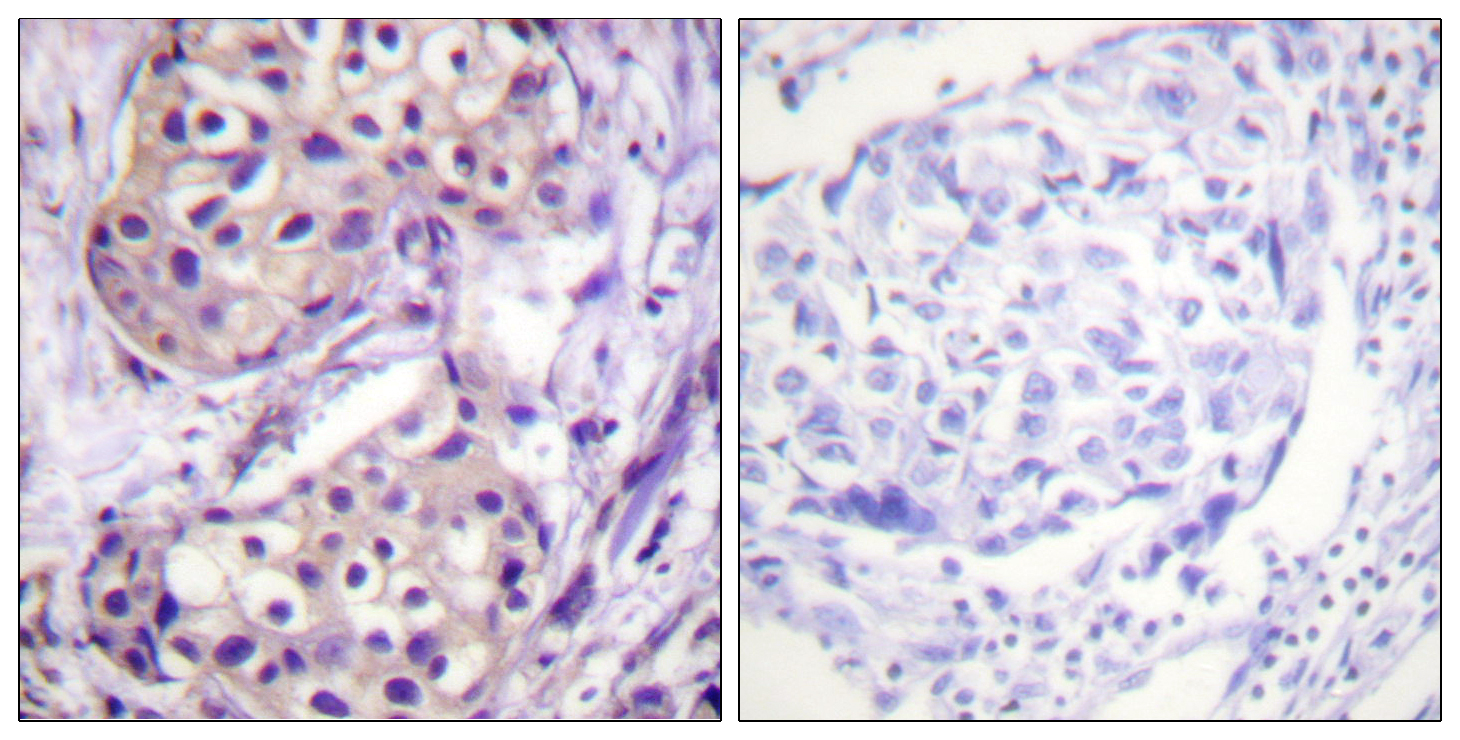Total IKKβ Cell-Based Colorimetric ELISA Kit
- Catalog No.:KA3136C
- Applications:ELISA
- Reactivity:Human;Mouse;Rat
- Gene Name:
- IKBKB
- Human Gene Id:
- 3551
- Human Swiss Prot No:
- O14920
- Mouse Swiss Prot No:
- O88351
- Rat Swiss Prot No:
- Q9QY78
- Storage Stability:
- 2-8°C/6 months
- Other Name:
- Inhibitor of nuclear factor kappa-B kinase subunit beta (I-kappa-B-kinase beta) (IKK-B) (IKK-beta) (IkBKB) (EC 2.7.11.10) (I-kappa-B kinase 2) (IKK2) (Nuclear factor NF-kappa-B inhibitor kinase beta) (NFKBIKB)
- Detection Method:
- Colorimetric
- Background:
- catalytic activity:ATP + [I-kappa-B protein] = ADP + [I-kappa-B phosphoprotein].,function:Acts as part of the IKK complex in the conventional pathway of NF-kappa-B activation and phosphorylates inhibitors of NF-kappa-B thus leading to the dissociation of the inhibitor/NF-kappa-B complex and ultimately the degradation of the inhibitor. Also phosphorylates NCOA3.,PTM:Ubiquitination on 'Ser-163' modulates phosphorylation on C-terminal serine residues.,PTM:Upon cytokine stimulation, phosphorylated on Ser-177 and Ser-181 by MEKK1 and/or MAP3K14/NIK; which enhances activity. Once activated, autophosphorylates on the C-terminal serine cluster; which decreases activity and prevents prolonged activation of the inflammatory response.,PTM:Yersinia yopJ may acetylate Ser/Thr residues, preventing phosphorylation and activation, which blocks the I-kappa-B signaling pathway.,similarity:Belongs to the protein kinase superfamily. Ser/Thr protein kinase family. I-kappa-B kinase subfamily.,similarity:Contains 1 protein kinase domain.,subunit:Component of the I-kappa-B-kinase (IKK) core complex consisting of CHUK, IKBKB and IKBKG; probably four alpha/CHUK-beta/IKBKB dimers are associated with four gamma/IKBKG subunits. The IKK core complex seems to associate with regulatory or adapter proteins to form a IKK-signalosome holo-complex. Part of a complex composed of NCOA2, NCOA3, CHUK/IKKA, IKBKB, IKBKG and CREBBP. Part of a 70-90 kDa complex at least consisting of CHUK/IKKA, IKBKB, NFKBIA, RELA, IKBKAP and MAP3K14. Interacts with SQSTM1 through PRKCZ or PRKCI. Forms an NGF-induced complex with IKBKB, PRKCI and TRAF6. May interact with MAVS/IPS1. Interacts with NALP2. Interacts with TICAM1. Interacts with Yersinia yopJ. Interacts with FAF1; the interaction disrupts the IKK complex formation. Interacts with ATM. Part of a ternary complex consisting of TANK, IKBKB and IKBKG. Interacts with NIBP; the interaction is direct.,tissue specificity:Highly expressed in heart, placenta, skeletal muscle, kidney, pancreas, spleen, thymus, prostate, testis and peripheral blood.,
- Function:
- leukocyte homeostasis, B cell homeostasis, lymphocyte homeostasis, skeletal muscle contraction, muscle system process, protein amino acid phosphorylation, phosphorus metabolic process, phosphate metabolic process, anti-apoptosis, muscle contraction, striated muscle contraction, intracellular signaling cascade, protein kinase cascade, I-kappaB kinase/NF-kappaB cascade, I-kappaB phosphorylation, response to toxin, regulation of protein kinase cascade, regulation of cell death, phosphorylation, response to drug, homeostatic process, regulation of apoptosis,negative regulation of apoptosis, regulation of programmed cell death, negative regulation of programmed cell death,regulation of I-kappaB kinase/NF-kappaB cascade, positive regulation of DNA binding, positive regulation of molecular function, regulation of transcription, homeostasis of number of cells, multicellular organismal movement,m
- Subcellular Location:
- Cytoplasm . Nucleus . Membrane raft . Colocalized with DPP4 in membrane rafts. .
- Expression:
- Highly expressed in heart, placenta, skeletal muscle, kidney, pancreas, spleen, thymus, prostate, testis and peripheral blood.
- June 19-2018
- WESTERN IMMUNOBLOTTING PROTOCOL
- June 19-2018
- IMMUNOHISTOCHEMISTRY-PARAFFIN PROTOCOL
- June 19-2018
- IMMUNOFLUORESCENCE PROTOCOL
- September 08-2020
- FLOW-CYTOMEYRT-PROTOCOL
- May 20-2022
- Cell-Based ELISA│解您多样本WB检测之困扰
- July 13-2018
- CELL-BASED-ELISA-PROTOCOL-FOR-ACETYL-PROTEIN
- July 13-2018
- CELL-BASED-ELISA-PROTOCOL-FOR-PHOSPHO-PROTEIN
- July 13-2018
- Antibody-FAQs


